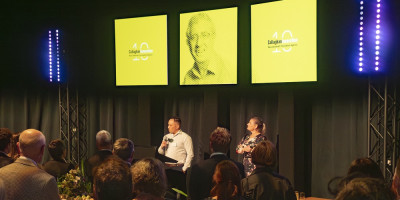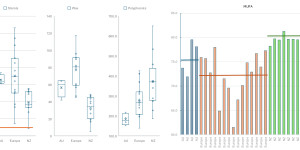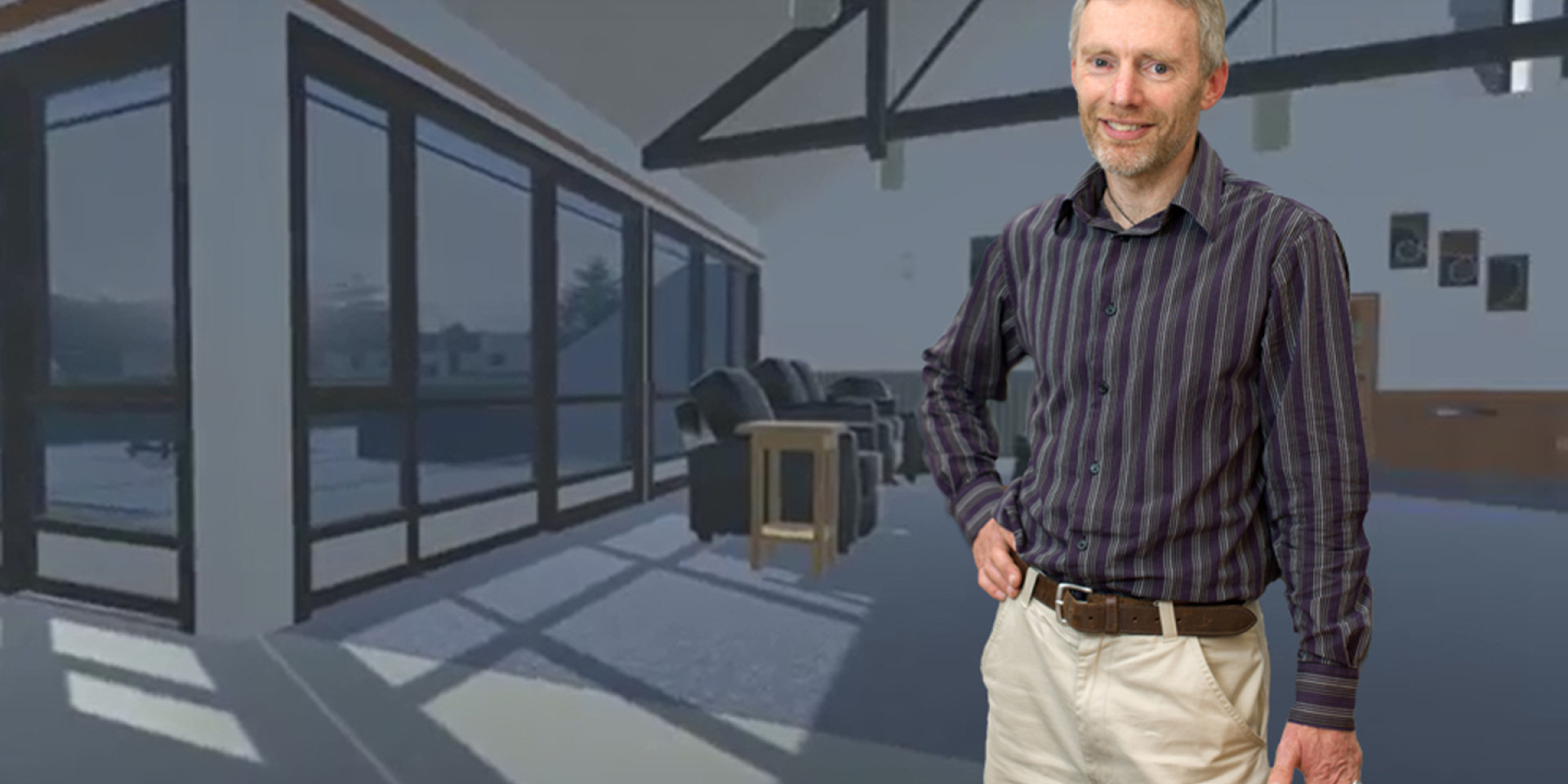People with tetraplegia will soon be using virtual reality to master their powerful new wheelchairs without colliding with any real hazards.
At a glance
- Setting out to help people learning to live with tetraplegia, a Christchurch collaboration between Callaghan Innovation, Stickmen Media and BAIL was formed.
- As part of the collaboration, Callaghan Innovation helped organise co-funding and commissioned Stickmen Media to virtualise a part of a real hospital rehabilitation unit.
- The result was the VR Wheelchair Trainer, which re-creates in virtual reality the living space of a person using a wheelchair so they can practise without risk.
Callaghan Innovation was right into it from the beginning and really they’ve never let this go.
- Brook Waters, CEO, MTech Games
The VR Wheelchair Trainer is the invention of a Christchurch collaboration set up by Callaghan Innovation with clinical researchers at the Burwood Academy of Independent Living (BAIL) and game developer Stickmen Media.
As MTech Games gets set to commercialise the system, the team is also closing in on a solution to the virtual motion sickness problem plaguing virtual reality users everywhere.
The challenge
One of the huge challenges for a person learning to live with tetraplegia is navigating their world in a powerful new wheelchair.
After a serious spinal cord injury, people spend between six weeks and nine months in a hospital rehabilitation unit mastering the skills they need to get back into their homes and lives.
Dr Jo Nunnerley, Academy Director at BAIL, says people with tetraplegia have limited arm and hand movement but have to learn to control powerful wheelchairs that often weigh more than 150kg.
“We’ve had people who’ve run into and damaged doors and walls, and they can be worried about running over the cat or the toddler,” says Jo.
“People find it hard to get around their own homes at first, let alone having to deal with public transport, shopping centres and airports, often while feeling exposed and vulnerable.”
The solution
Like a flight simulator for wheelchair pilots, the VR Wheelchair Trainer re-creates in virtual reality the living space of a person using a wheelchair so they can practise without risk.
When game designer Stickmen Media showed one of the early Oculus Rift developer kits to Callaghan Innovation Distinguished Engineer Marcus King – a virtual healthcare expert – he took it to BAIL where he and Jo’s team brainstormed the idea of a virtual wheelchair practice zone.
“Virtual reality is proven to have huge advantages in training people,” says Marcus.
“We can simplify the environment so they can master the basic tasks before we introduce virtual distractions like people and noise and then virtual hazards like tight spaces, pets or toddlers.”
Callaghan Innovation organised co-funding and commissioned Stickmen Media to virtualise a part of a real hospital rehabilitation unit. The team piloted the game-based system with five experienced wheelchair users and seven therapists.
“In New Zealand, our big advantage is that we’re small and nimble so we can get an idea to proof of concept fast,” says Marcus.
“In the United States, it usually takes them two years just to get ethics approval, and the clinicians and the engineers are far less connected, while hospitals are far more averse to litigation risk.”
When Brook and Margaret Waters of Stickmen Media put up their hands to commercialise the prototype, Callaghan Innovation helped create a new entity, MTech Games Limited, and transferred the intellectual property to it.
The VR Wheelchair Trainer collects data on a user’s progress for their therapist, making the training process more effective. In the future, it could even adjust the environment to suit a user’s personality, once it works out whether they learn better by nurturing things or conquering them.
“We put people’s fears right in front of them in a constructive way and they overcome them,” says Brook, who is now CEO of MTech Games.
“We can, for instance, give them a bunch of callous teenagers on a bus to contend with. But a lot of people who end up with severe spinal cord injuries are young, risk-taking men, so as you can imagine, we are getting rather more requests for zombies and one chap wants a cannon.”
The result
The team is now perfecting a prototype designed to give people with tetraplegia better wheelchair navigation skills, in less time, with no risk.
“I was surprised at how good it was,” says wheelchair user and pilot participant Johnny Bourke, who is Deputy Academy Director at BAIL.
“Powerful wheelchairs are tricky. I have 12 years’ experience and my leg’s in a cast right now after I had an altercation with the sofa while chasing my children.
“Back when I started, I always remember how narrow the doors and turning spaces were, what it was like to have people staring at you. I think training in the virtual world before taking on the real one will help people a lot.”
MTech Games is now planning the first clinical trial after Marcus called his contact at the world’s biggest wheelchair research facility, the University of Pittsburgh’s Human Engineering Research Laboratories (HERL), funded by the U.S. Department of Veterans Affairs.
The company’s next step is to virtualise the homes that people with tetraplegia will return to and environments like public transport, shopping centres and airports.
It sees the VR Wheelchair Trainer as the foundation for a whole suite of applications for people with disabilities – virtually-designed home modifications, wheelchairs adjusted for individual users before they are prescribed, detectors for impairments like hemispheric visual neglect, and training tools for those who will live or work with people using wheelchairs.”
What’s next
The team has developed a protocol to reduce virtual motion sickness by up to half in just five days and is testing it to get it to a clinically workable level.
“The nausea caused by the sense of sliding through the environment is a problem afflicting the whole industry, but wheelchair movement makes it worse,” says Marcus.
“The problem can’t be overcome by teleporting, as it is in a game, and the consequences of vomiting can be serious for someone who is paralysed. That was the stimulus for us to tackle this.”
The team has published its work, with a follow-up due later this year.




















